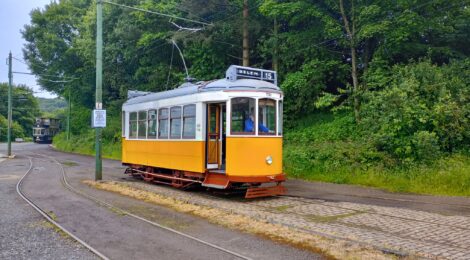
T&I News 8 2024…
In this post we find trams at the centre of attention, with work progressing on Gateshead 10 and Lisbon 730, as well as some interim repairs on 196 to extend it’s current phase of operation to give us breathing space as other trams come due for attention. The team has also been manufacturing fire doors for the cinema projection room, which I’ll try to remember to feature here in a future post.
Gateshead 10
Below: The modifications to Gateshead 10’s suspension components are proceeding, with the linkage fixing points bored, ready for bushing (and new links). The casting is then trimmed to the new shape – rather a heart in mouth moment as the hacksaw does its work!
Below: The first of the modified links is trial-fitted in place, in order to test the concept and establish the measurements for the production links, that will be made from new material. The coil spring will be removed to enable the correct gap (without the weight of the tram on top) to be set, and then measurements taken.
Below: New bolster pins, that locate the body onto the bogies, have been manufactured. These aren’t like model railway ones, where the pins effectively locate and provide the point of rotation, instead being locating points – the actual load being on bearing pads which are shaped to allow and control the rotational forces. As the body bolsters were twisted, they had caused these pins to make contact with their neighbouring components, causing them to bend as well as leaving witness marks. New pins have been made, threaded for the nuts that secure them (and don’t mean you can lift he body and take the bogies with them!) and had their heads welded in situ (which hold them captive and prevent them from rotating).
Engineering and workshops
Below: The Landrover TD5, despite being a ‘modern’ vehicle, has been undergoing repairs prior to MoT submission. Work on the suspension has been needed, with parts being bored and bushed, as seen here. In the second view, an after and before example is included as a reference point.
Below: Space in the machine shop! But not for long. Our elderly Dean Smith & Grace lathe expired recently. It has now been traded in against a newer machine that we are due to take delivery of in the next few weeks. Several redundant machine tools have been taken out of the machine shop, as the area is cleared to create more working space and a smaller pool of more suitable machines for use by the three occupants of this workshop.
Below: Crosville 716 recently gave us some concern, with regard to the engine. The problem was resolved in situ, but meanwhile, the Cub Tipper was prepared for a potential engine transplant – in order to keep the accessible bus service going. This revealed some work was needed on the tipper, and a new head gasket has been fitted and some repairs are currently underway to the radiator. It will keep its engine too! We have a spare engine in store, and are now looking at overhauling this in order to make a quick swap for 716, when this becomes due overhaul (it would then be replaced back into the bus). It might even be run-in, in the tipper. Sufficient spared were obtained to enable a spare ‘floating’ engine, so this avenue is currently under consideration. The radiator from the tipper has since been removed and dismantled for de-clogging and repair, before reassembly back onto the lorry.
Below: The radiator was refitted and tested this week. New vertical tie rods were manufactured for it, but otherwise these are the original, repaired, components.
Below: Oporto 196 has been sidelined whilst some repairs are carried out to the brake components, in particular, the brake beams that transmit the hand/air brake forces into the forces that act, via the brake blocks, on the wheel treads. With components removed, the wear could be assessed – and this is an example of what the team found. The hole, through which a pin is fitted to act as a pivot, has worn oval, creating lost-motion and making it harder to relax the brakes and then set them up evenly and with equalised wear on the brake blocks.
Below: Various components after removal and following assessment. The decision was taken to weld up all of the holes (with one exception) and then re-drill them, to allow new pins to be fitted (to original dimensions). One bush was also to be replaced. This is one end of the tram’s brakes – the other end will be similarly tackled next week.
Below: Another oval hole, before being welded up.
Below: It is quite hard to explain how the components work, when they are sat on the floor, remote from the tram truck. But in essence, the lever that is running diagonally towards the top right is actuated by the hand/air brake pulling upon it. This has the effect of causing the mechanism to move upwards (as we look at it here – it is forwards i.e. towards the end of the tram, when assembled). This pushes the two brake beams apart, with the motion being communicated to the far end of the tram via rods (which run through the square apertures in the rectangular components seen at the end of the upper beam in this view). This causes the blocks to be pushed against the wheel treads, the motion being of equal force on all four corners. Maybe we’ll make a video of this in action to help explain the principle!
Below: Drilling new holes, using the modernised radial arm drill. Most of the holes are not bushed (i.e. don’t have a brass or bronze ‘plug’ in which the pin locates). The one that is, had a new bush made, fixed in situ and drilled to enable a grease nipple to be fitted – something we are increasingly standardising on for moving parts on the tram fleet, even where no lubricating points were originally included in the construction.
Below: These two photos show original (worn) and replacement pins and bushes. The replacements are made from scratch in the machine shop, where the team can rapidly produce such items.
Below: Some of the overhauled items are seen after work was completed. Next overhaul will see the tram more thoroughly dismantled, but for now, this work will give us 196 back in service in better shape until we have the capacity to overhaul the tram. The new bush can be seen in the pivot bracket on the upper brake beam – this being seen in some of the earlier photos above. The new holes in the lower bar are also clear to see – the discolouration of the metal being caused by the welding up of the original worn holes, to enable them to be drilled to original dimensions. The plan is to assemble these items next week, and remove the same items from the other end of the tram and carry out the same work on them.
Below: One end’s worth of components ready to be fitted back onto 196. The other end is being removed and will receive the same work, with the pins etc. already having been made in readiness for it.
Below: New bolts were also prepared for the drop links, upon which the brake assembly hangs from the truck frame. The originals are the right hand two examples.
Lisbon 730
I thought that readers might appreciate an update on 730. This has been receiving attention from the Beamish Tramway Group volunteers, who have carried out a great deal of electrical work on the tram (to modify it so as to be compatible with the rest of the fleet at Beamish). One item that we are planning to replace is the inverter, to produce the low-voltage power supply for lighting on the tram. The arrangement currently fitted does work, but we want to fit a more Beamish-friendly system using new components that are available to the railway industry now (supplied from Canada) and which were not available when 730 was restored.
The tram has been able to drive in the depot environs, but is not yet ready to be handed over for driver training and traffic. One thing we want to look at is whether we can modify the brake block carriers, so that they are compatible with 114 and 196 (for which we carry stocks of brake blocks), the current examples fitted being of a unique design.
Below: 730 is seen moving around the depot yard, whist being shunted back from the inspection pit to its current berth on Road 1 of the depot. The restoration of the tram was carried out to a very high standard, and the work currently being undertaken simply aligns it with the museum’s existing tramcar fleet to enable a consistent maintenance programme to be applied across all of our trams.
Below: A possible solution to the brake modifications is to utilise components still fitted on the spare Oporto Brill 21E truck that was fitted under Oporto 176 and has donated parts to 114 and 196 in the past. This truck will shortly move to the workshop where the suitability of these items will be investigated…
Photos in this post by Peter Barlow, Phil Doran and Paul Jarman




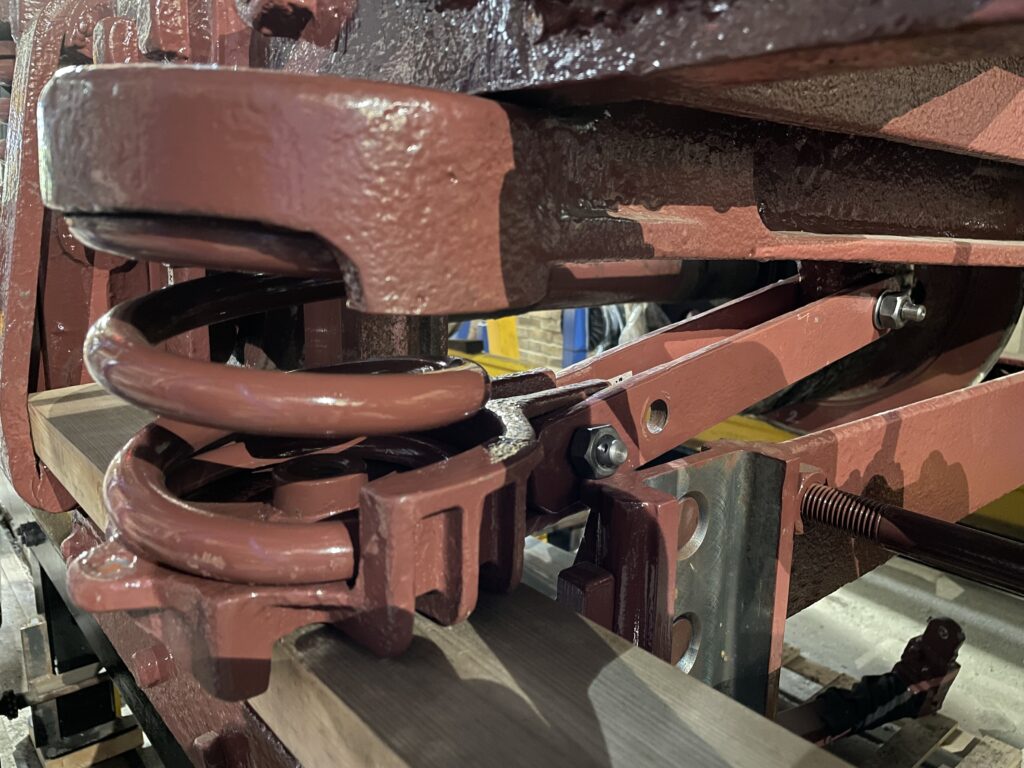
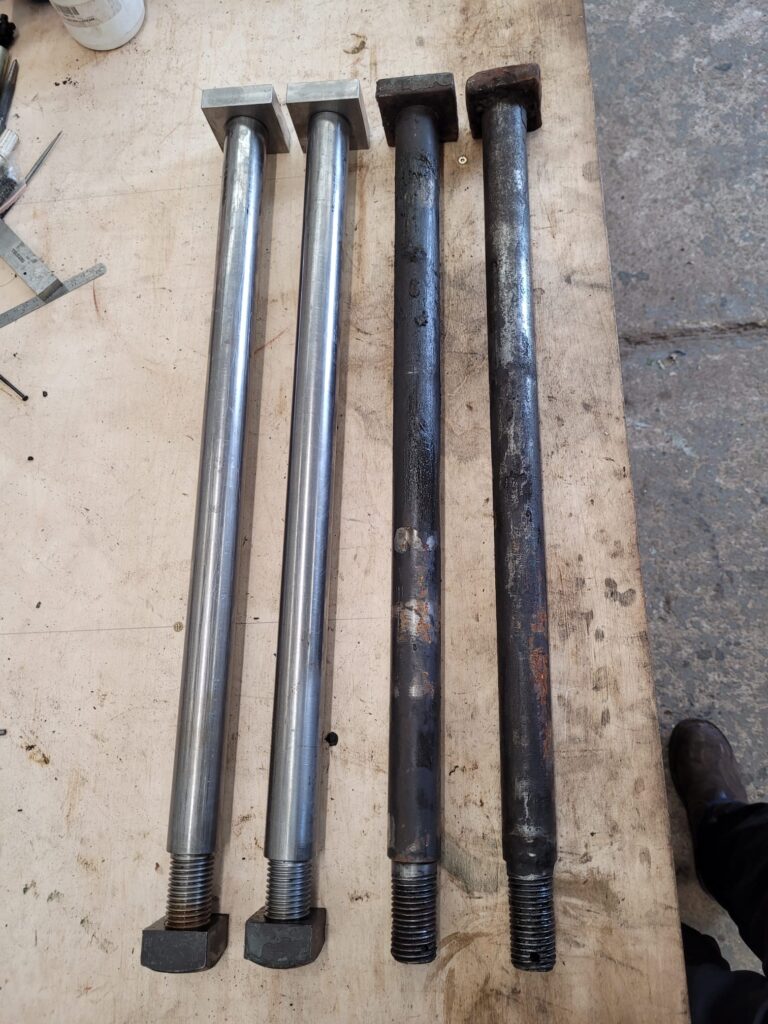


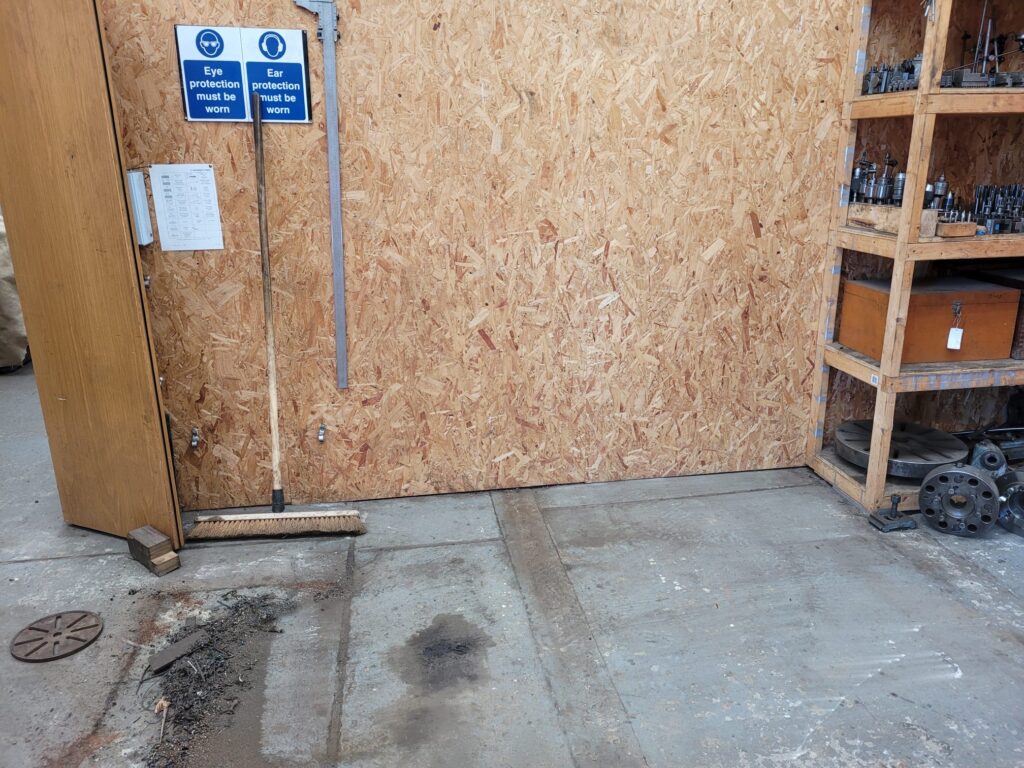
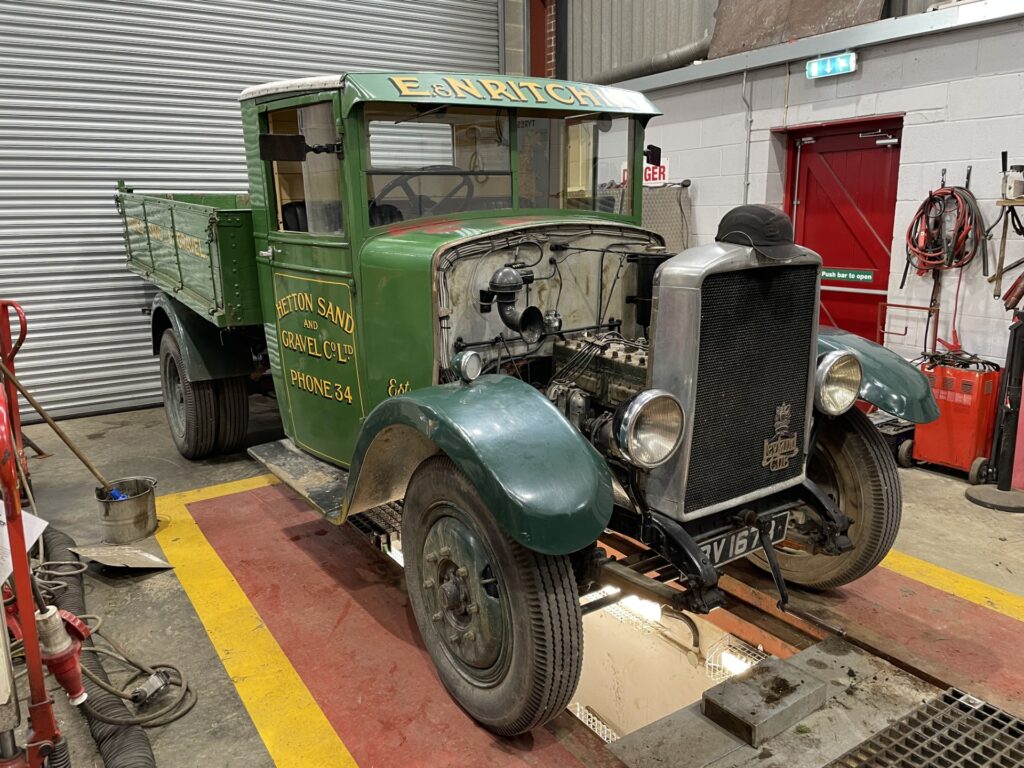
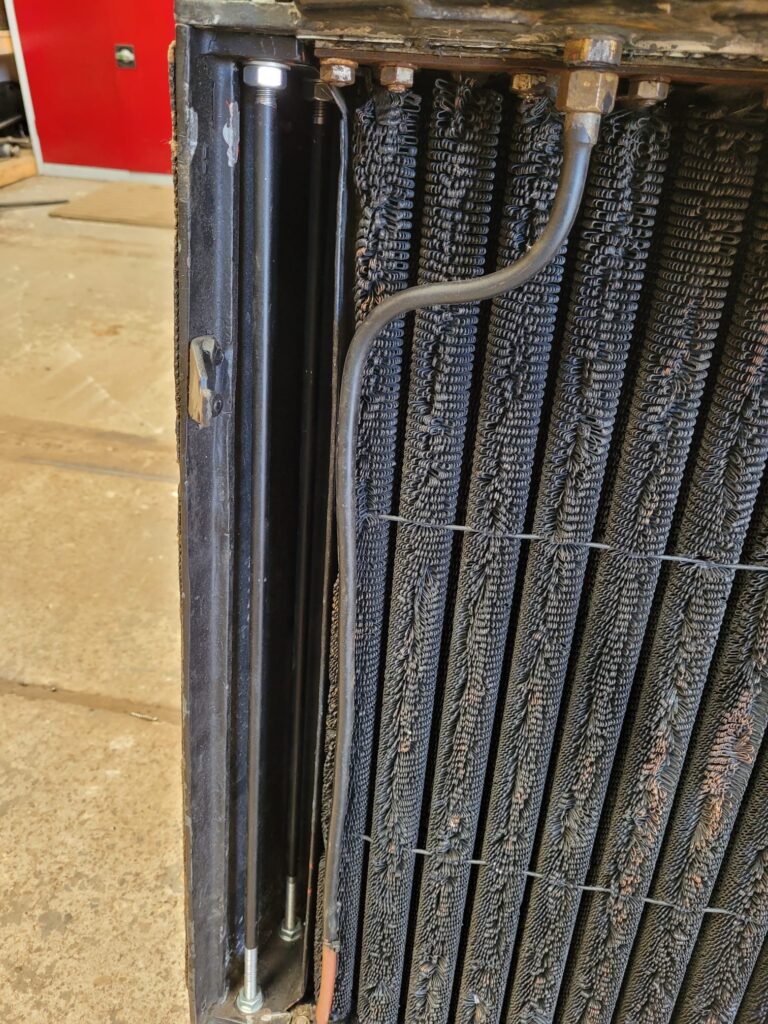


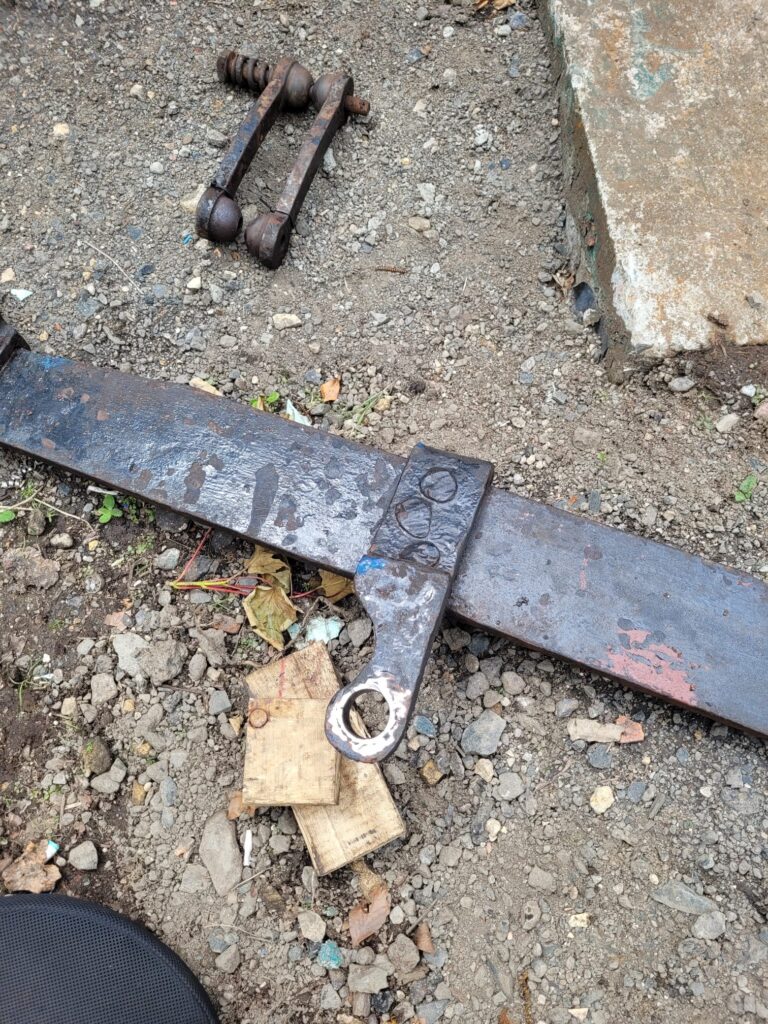
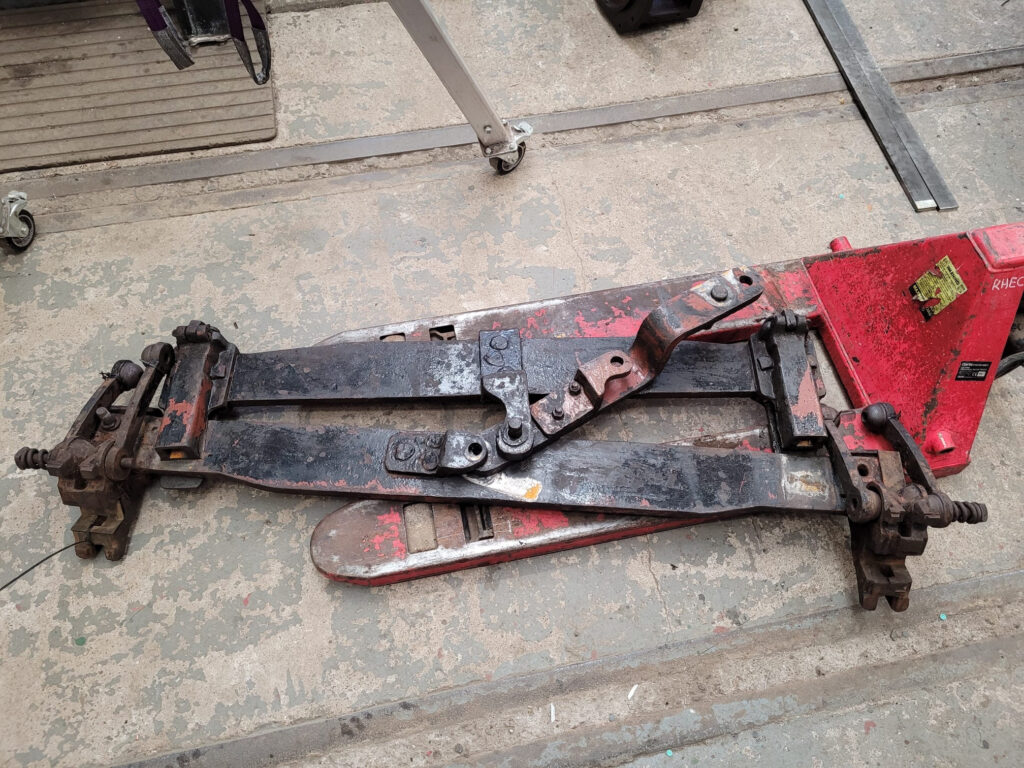


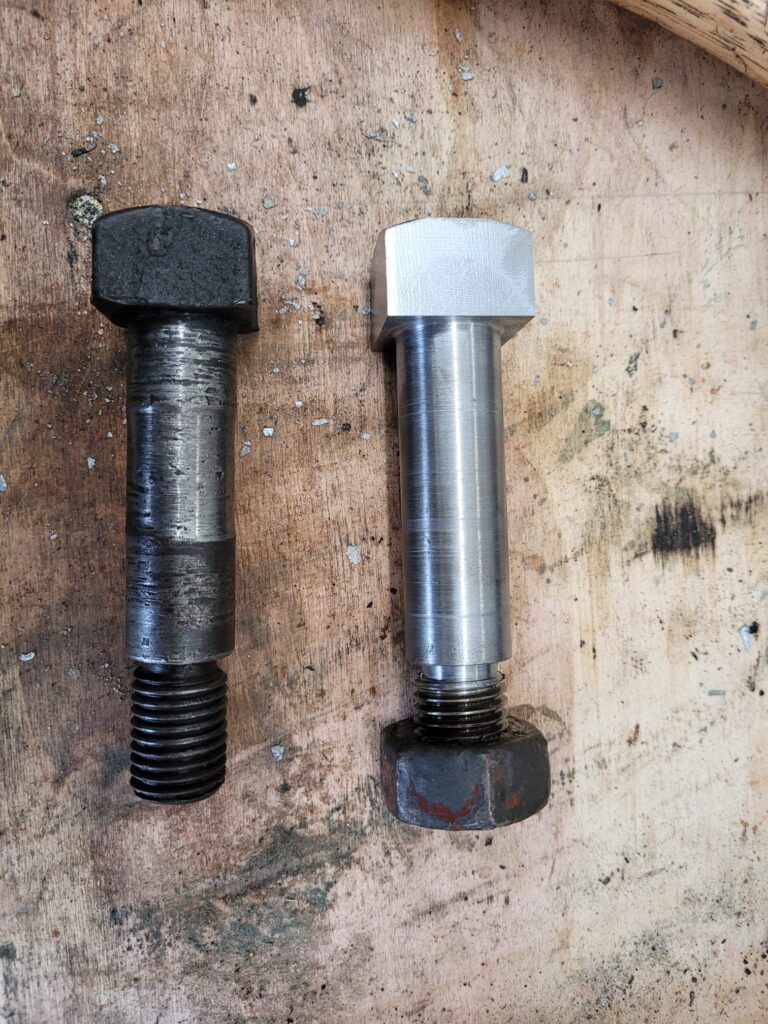


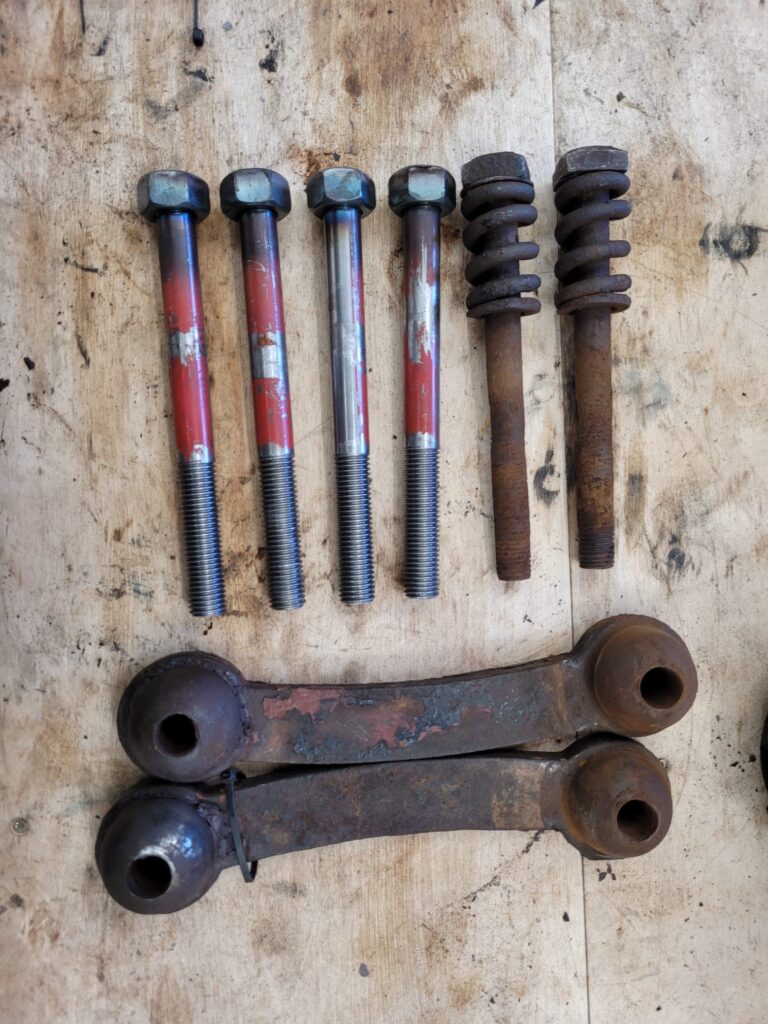








Recent Comments